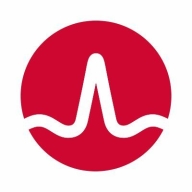

Splunk Observability Cloud and DX SaaS are competing products in the observability and performance management market. DX SaaS offers superior features, making it worth the investment despite Splunk's appeal in pricing and customer support.
Features: Splunk emphasizes comprehensive monitoring, real-time alerts, and AI-driven insights. DX SaaS has advanced analytics, seamless integration capabilities, and robust data visualization tools.
Ease of Deployment and Customer Service: DX SaaS offers flexible deployment options with strong customer service, streamlining implementation. Splunk provides a straightforward setup with extensive support resources.
Pricing and ROI: Splunk offers a competitive pricing structure with potential for quick ROI; however, DX SaaS requires a more substantial initial investment with a longer return period.
| Product | Market Share (%) |
|---|---|
| Splunk Observability Cloud | 2.0% |
| DX SaaS | 0.4% |
| Other | 97.6% |

| Company Size | Count |
|---|---|
| Small Business | 20 |
| Midsize Enterprise | 10 |
| Large Enterprise | 43 |
Dx SaaS is a solution whose goal is to ensure that businesses and organizations can monitor and manage the way that users experience their applications. This solution contains many powerful tools that are designed to give administrators the maximum amount of control over the experiences that clients have when employing their applications. Organizations and businesses can rest easily and ensure that the product they put out into the world is always being watched for potential issues that will be resolved proactively and quietly.
Dx SaaS Benefits
Some of the benefits that come from using Dx SaaS include:
Dx SaaS Features
When users choose to employ the DX SaaS solution, they gain access to many different capabilities. These features include:
Reviews from Real Users
The DX SaaS solution enables companies and organizations to take charge of the digital experiences that their customers receive. It is designed in a way that empowers these companies to truly monitor their applications and maintain a positive user experience. DX SaaS recognizes that applications can be run on any number of platforms. As a result, solutions that monitor and analyze applications need to be capable of handling a wide variety of platforms. This is one of the considerations that the solution’s designers made integral to its design.
Administrators can leverage DX SaaS to spot potential issues before they can become problems for the users of their applications. DX SaaS has metrics that can provide application administrators with important insights. Patterns and areas where trouble can arise are immediately exposed so that administrators can take the steps that are necessary for the applications to run smoothly.
A consultant at a technical services company writes, “It supports numerous platforms.” Furthermore, they add, “The CA APM blaming metrics are quite useful in identifying a potential issue.”
Splunk Observability Cloud offers sophisticated log searching, data integration, and customizable dashboards. With rapid deployment and ease of use, this cloud service enhances monitoring capabilities across IT infrastructures for comprehensive end-to-end visibility.
Focused on enhancing performance management and security, Splunk Observability Cloud supports environments through its data visualization and analysis tools. Users appreciate its robust application performance monitoring and troubleshooting insights. However, improvements in integrations, interface customization, scalability, and automation are needed. Users find value in its capabilities for infrastructure and network monitoring, as well as log analytics, albeit cost considerations and better documentation are desired. Enhancements in real-time monitoring and network protection are also noted as areas for development.
What are the key features?In industries, Splunk Observability Cloud is implemented for security management by analyzing logs from detection systems, offering real-time alerts and troubleshooting for cloud-native applications. It is leveraged for machine data analysis, improving infrastructure visibility and supporting network and application performance management efforts.
We monitor all Application Performance Monitoring (APM) and Observability reviews to prevent fraudulent reviews and keep review quality high. We do not post reviews by company employees or direct competitors. We validate each review for authenticity via cross-reference with LinkedIn, and personal follow-up with the reviewer when necessary.